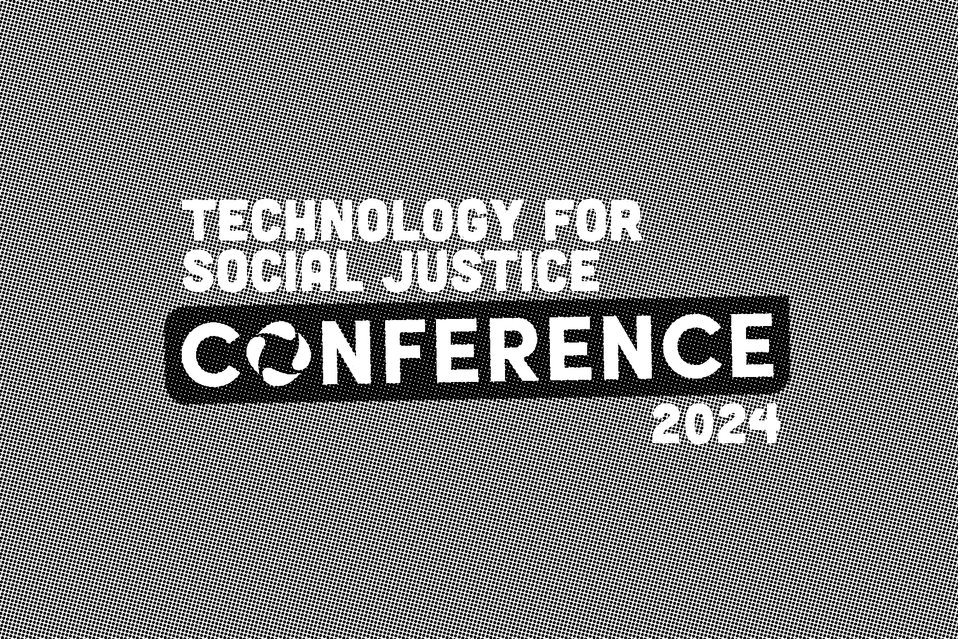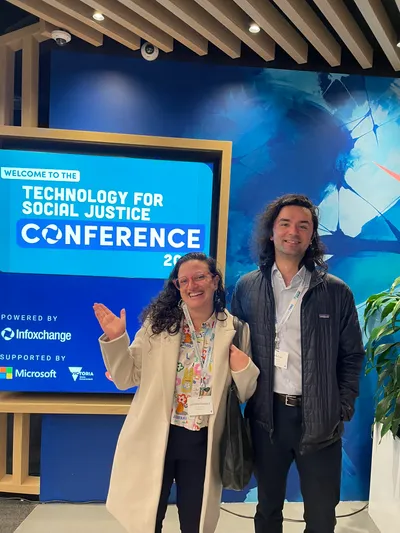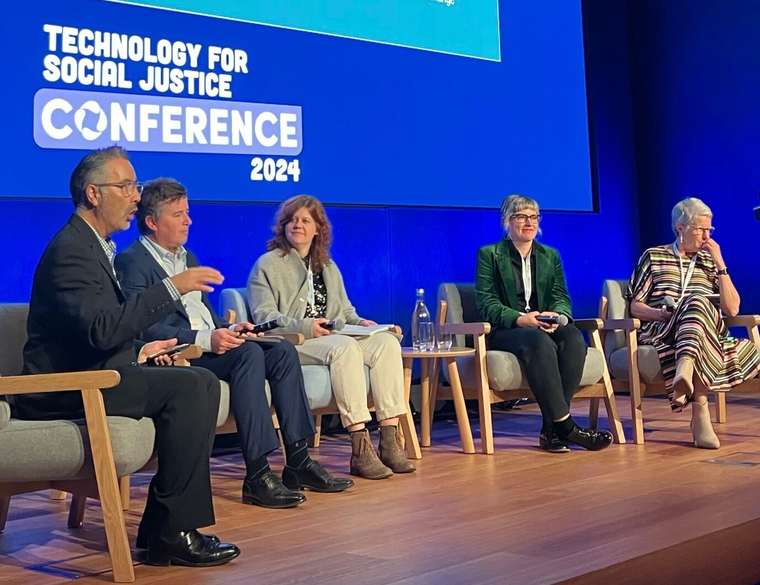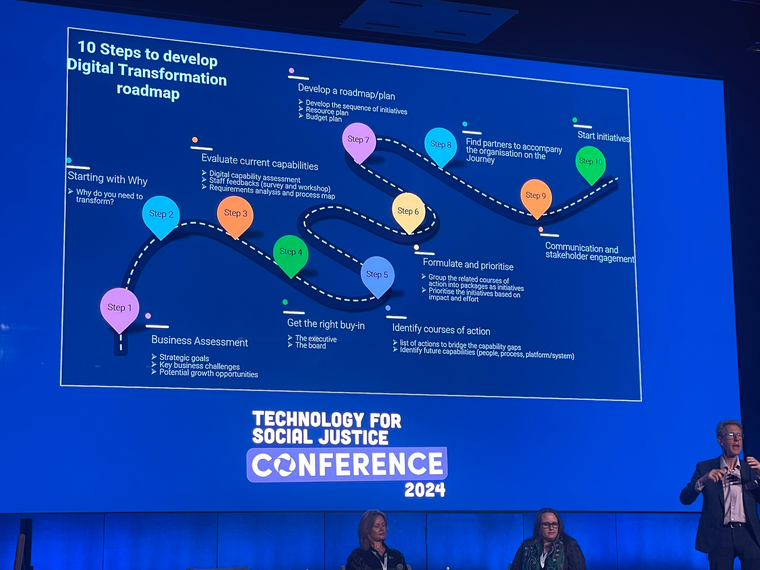Technology for Social Justice Conference 2024 Wrap-up

The Infoxchange Technology for Social Justice Conference (formerly the Connecting Up conference) is an event for not-for-profit and IT professionals, focusing on the use of technology to enhance social justice initiatives. It aligns completely with the work we do and who we work with (digital technology 🎉 not-for-profits 🎉), so it was a no-brainer for us to attend the conference this year to learn more about those who work in the sector and their challenges, successes and ideas.

This year’s Technology for Social Justice Conference was extremely enlightening, showcasing a huge range of expertise and ideas, all geared toward helping not-for-profits elevate their impact. We met and heard from a bunch of lovely, passionate people working for a variety of great causes like housing people experiencing homelessness, connecting legal help to those in need and advocating for the health and wellbeing of First Nations people. Needless to say, we are so glad we attended and will absolutely do it again next year!
In the spirit of sharing the great knowledge shared with us, here are our top three takeaways from the conference and what they could mean for you:
AI is dominating the conversation
Since generative AI had its Big Bang moment via ChatGPT in November 2022, interest and investment in AI has only accelerated. Unlike tech bubbles in recent memory that seem to orbit exclusively around tech and finance, everyone is curious about the impacts and possibilities of AI, including those in the not-for-profit sector. The technology is powerful, and a bit scary, so it made sense that a lot of the panels, discussions and workshops at the conference either focused on or had a segment concerning AI.

What this could mean for you
So what can AI do? What do not-for-profits need to watch out for? We’ll write a more detailed post on AI for not-for-profits in the near future, but for now here are some of our recommendations on the topic:
- Generative AI, like ChatGPT, is already useful. Start playing with it now, and start small. You can use it for things like creating intelligent chatbots that can accurately answer questions about your organisation’s operation and services, or as a writing partner for marketing copy or grant applications. Just be aware of what information you give it - even if you’re paying for the tool it’s possible the AI model will store that data which could then subsequently be retrieved elsewhere.
- Speaking of data, invest in your data infrastructure in order to make the most of AI systems. The best time to do this was ten years ago, the next best time is now. Audit your current data models and management systems and identify gaps. Train your team on data literacy - this is acutely important for not-for-profits since they often deal with extremely sensitive information. Don’t let bad data get in the way of great AI systems!
- Do not use generative AI to make decisions, but embrace using generative AI to inform decision-making. There are issues of “hallucinations” (where an AI system returns a completely false response) as well as systemic bias inherent in AI training data, so our recommendation is to always include a human evaluation of the final responses. The technology will continue to improve, though there is some concern these issues may be intrinsic to generative AI systems themselves. Still, there is no denying the immense value to be gained by using them, despite the shortfalls!
In summary: keep your eyes peeled on AI. The technology is evolving at a relentless pace, offering not-for-profits tools to streamline operations more efficiently than ever. Just remember to stay informed of the limitations and shortfalls!
A call for greater collaboration
One interesting revelation was the extensive duplication of efforts within the not-for-profit sector. A fantastic panel discussion with Sherry Swanson of VACCHO, the Victorian Aboriginal Community Controlled Health Organisation gave a great example of this, where 33 member organisations provided the same services, but used multiple different systems. Thankfully they were able come together to create a single system that all could use, but it required significant work, including multiple meetings with 33 CEOs 😬.

If a group of NFPs all provide the same service to the same clients (potentially under the same federal contract), then in theory their system requirements should be the same. But instead of there being one “sanctioned” system, it’s common that there ends up being multiple systems, one for each organisation! This redundancy isn’t just a drain on resources; it’s a missed opportunity for enhanced impact through collaboration.
What this could mean for you
Think partnership! Whether it’s sharing resources, knowledge, or networks, there’s immense power in unity.
Start by identifying potential collaborators with complementary goals. Are there service providers who provide the same or similar services to you? Get in touch with them! Share your ways of working and come up with the best operations that work for everyone.
Consider joint funding applications, shared training sessions, or combined outreach programs. By pooling expertise and resources, you could broaden your network, tackle larger projects and create more substantial impacts in the communities you serve.
NFPs often get stuck on the big picture

Not-for-profits understand the importance and difficulty of creating real and lasting social impact. They design human-centred solutions and use systems-thinking to understand the people they serve, the services they provide, and the dynamic relationships between the two. They are the experts in big-picture thinking because they have to be.
This clarity of vision sets up not-for-profits well for a lot of things. A comment by Judy Slatyer (former CEO of the Australian Red Cross) during a panel highlighted how not-for-profits should be heavily involved in the ethical development of AI systems, because who knows more about promoting inclusivity and fighting against bias than them?
Still, the nitty-gritty execution of big-picture ideas can be a bit of a stumbling block. Translating high-level visions into actionable steps can be difficult without the right expertise or resources at hand (especially for technology projects), which often results in projects that fail to reach their full potential.
What this could mean for you
If your organisation struggles with the practical aspects of technology implementation, consider us your go-to partner! From developing digital tools to managing tech projects, we ensure your innovative ideas are executed seamlessly, enabling you to focus on what you do best! Contact us at info@neoncarrot.com.au or by using the contact form on our homepage to find out more about how we can work together.
Wrapping up the wrap-up
The Infoxchange Technology for Social Justice Conference 2024 gave us some great insights into the not-for-profit sector - what challenges exist today, what people are curious about, and opportunities for the future. The conference reinforced the critical role of technology in helping not-for-profits operate at their maximum potential, and taught extensively on topics like AI readiness, cybersecurity, and the use of data for impact. All in all it was a great success, so we’ll see you there next year!
Until next time! 💡🥕
« Back to all articles


